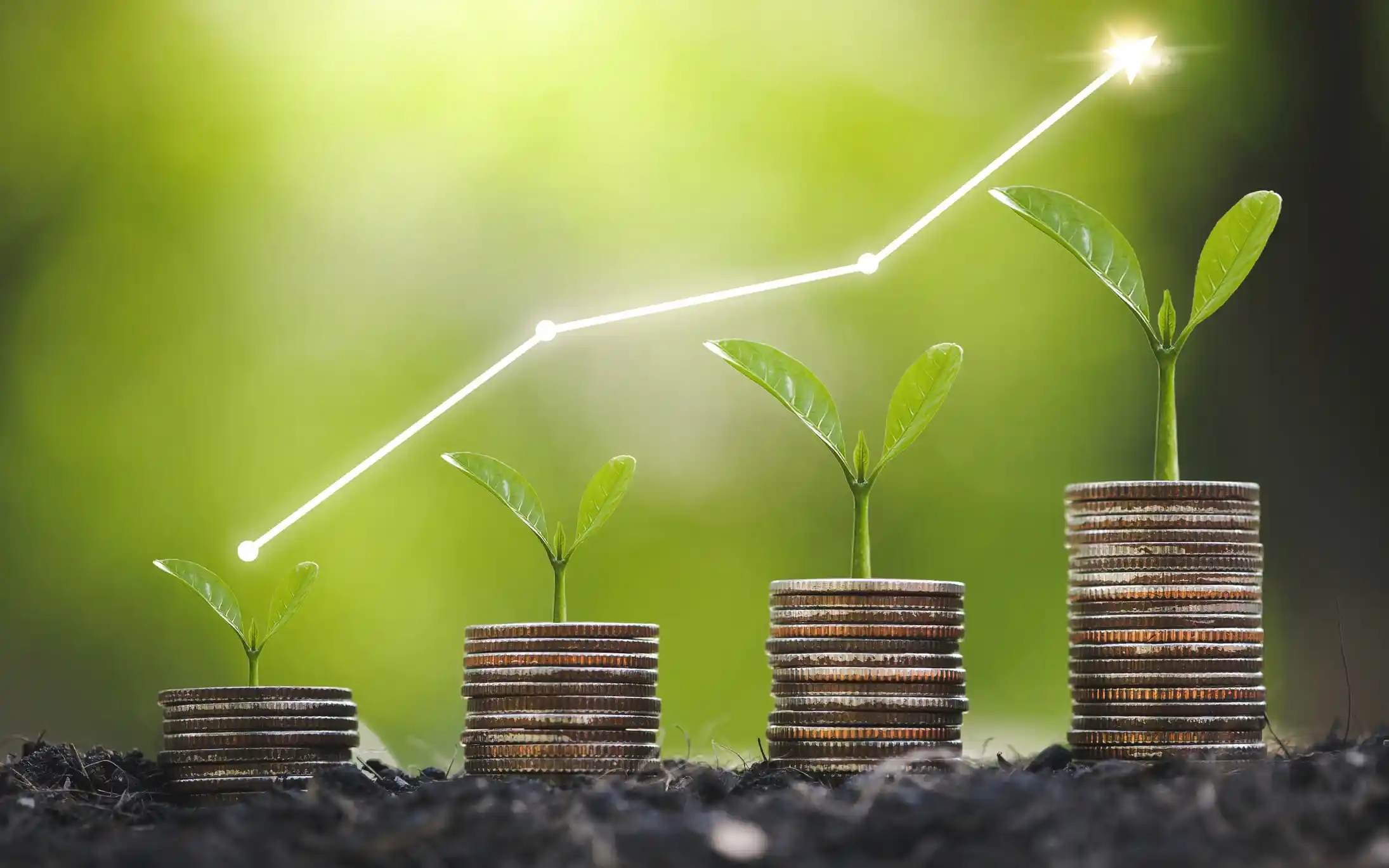POSTED
July 18, 2025
Why Sustainable Investing is More Important Now Than Ever
Sustainable investing is no longer a fringe movement—it’s a necessity for anyone looking to navigate a rapidly changing economy. At the start of 2024, U.S. sustainable assets under management (AUM) reached $6.5 trillion, representing 12% of all professionally managed assets nationwide. This surge reflects a convergence of climate-driven risks, evolving investor expectations, and the growing […]

Sustainable investing is no longer a fringe movement—it’s a necessity for anyone looking to navigate a rapidly changing economy. At the start of 2024, U.S. sustainable assets under management (AUM) reached $6.5 trillion, representing 12% of all professionally managed assets nationwide. This surge reflects a convergence of climate-driven risks, evolving investor expectations, and the growing recognition that environmental, social, and governance (ESG) considerations are now central to both risk management and long-term growth potential.
The Evolution of Sustainable Investing
Over the past two decades, sustainable investing has undergone a profound transformation. What began as simple negative screens (excluding sectors such as tobacco or weapons, for example) has evolved into a more holistic approach, incorporating ESG integration, impact investing, and transition finance. These modern strategies embed sustainability factors directly into investment decisions, enabling investors to identify hidden risks and seize emerging opportunities. The growing scale of sustainable investing alone underscores how far the movement has come. We are at a unique inflection point shaped by record climate-related losses, accelerating clean-energy investment, and the rise of climate-risk disclosure as a mainstream financial practice.
The Macro Forces Driving the Shift to Sustainable Investing
Behind the growing embrace of sustainable investing are several powerful forces reshaping markets. First, physical and transition risks have become impossible to ignore. In 2024 alone, the U.S. experienced 27 climate disasters causing over $1 billion each in damages, pushing total climate-related losses above $1.4 trillion for the decade. This trend aligns with findings from the Intergovernmental Panel on Climate Change (IPCC), which concludes with high confidence that climate change is increasing the frequency and severity of extreme weather events, including heatwaves, floods, and hurricanes. At the same time, transformative clean-energy investments continue to accelerate to meet the challenge, creating new sectors and value chains that offer investors exposure to megatrends grounded in the energy transition.
Meanwhile, investor demand is reorienting capital flows toward sustainable assets. A BlackRock survey found that more than half of global institutions plan to increase their allocations to low-carbon investments within the next three years, a clear sign that capital is being re-priced to reflect sustainability performance. Even after temporary outflows earlier this year, U.S. sustainable fund assets remain strong at approximately $330 billion, demonstrating the deep and resilient appetite for investments that balance financial returns with long-term environmental and social value.
Data and technology have also advanced dramatically. Artificial intelligence-powered ESG analytics now allow investors to pinpoint financially material sustainability risks and opportunities with greater precision. A UN PRI meta-review of over 1,000 studies shows that ESG integration either improves or has no negative effect on risk-adjusted returns. Better data means better pricing of non-financial risks, which in turn makes ESG performance an actionable metric for modern portfolios.
Why ESG Integration Supports Stronger Performance
Contrary to lingering myths that sustainability comes at the expense of performance, research consistently shows that ESG strategies frequently match or outperform traditional approaches. The UN PRI’s comprehensive review highlights that modern studies overwhelmingly find either neutral or positive impacts on risk-adjusted returns. A Harvard study further revealed that companies scoring high on material ESG issues delivered 1–2% annual alpha over peers with low ESG scores. Although some ESG funds have recently faced short-term underperformance due to rate sensitivity or sector rotations, these fluctuations are not structural flaws—rather, they reinforce the need for thoughtful, diversified ESG integration as a long-term strategy.
Ignoring ESG: A Growing Set of Risks
For those still on the sidelines, the cost of inaction is rising. Companies and investors ignoring ESG considerations increasingly face tangible risks, including physical-asset impairment from extreme weather events, stranded-asset write-downs as industries shift away from carbon-intensive models, and mounting litigation over environmental or health-related harms. Regulatory exposure is another key concern, especially as states like California and others expand climate-related disclosure requirements. Beyond these financial and legal risks, organizations that fail to integrate ESG also risk losing talent, as younger generations overwhelmingly seek purpose-aligned employers.
Clean Energy’s Explosive Growth and What It Means for Investors
Amid these shifts, nowhere is opportunity clearer than in the rapid expansion of utility-scale solar. In 2024, U.S. solar generation grew by 27%, with solar alone accounting for two-thirds of all new electricity capacity additions. By year-end, the nation had 239 gigawatts of installed solar, producing more than 300 terawatt-hours of clean power annually. Top states like California and Texas alone added enough solar generation last year to power millions of homes, underscoring the scale and momentum of this transformation.
This is more than an environmental achievement—it represents a powerful investment opportunity. Each new gigawatt of solar brings modernized infrastructure, local job creation, and stable long-term revenue from power purchase agreements (PPAs), all while delivering essential carbon reductions.
Shasta Power Fund II: Enabling the Future of Clean Energy
Recognizing this moment, Shasta Power Fund II is purpose-built to connect investor capital with shovel-ready solar projects that are fully permitted, interconnection-secured, and ready for construction. By targeting early-stage assets, the fund capitalizes on early stage project value, while managing development risk to accelerate pathways to strong returns. As renewables continue to dominate new capacity additions, these projects offer strong profit potential and alignment with one of the most dynamic growth stories in the global economy.
What sets Shasta Power Fund II apart is not just the strong track record of the Shasta team and the growing pipeline of projects, but the structure of the fund itself. Unlike traditional tax-equity arrangements, which are accessible only to large institutions, Shasta’s Reg A+ offering democratizes access, allowing both qualified accredited and non-accredited investors to participate in institutional-grade solar development. This opens the door to investing in utility-scale solar projects that aim to deliver both measurable climate impact and strong, risk-adjusted financial returns.
The Bottom Line: Opportunity Meets Purpose
As climate impacts intensify and markets continue to shift, sustainable investing has clearly moved from niche consideration to a core investment discipline. By integrating ESG factors today, investors can protect their portfolios from emerging risks, participate in the economic benefits of the clean-energy transition, and align their capital with a mission that matters.
For those ready to join the movement, Shasta Power Fund II offers a timely, accessible way to turn market opportunity into measurable impact—backed by proven solar development expertise.





